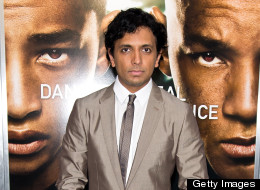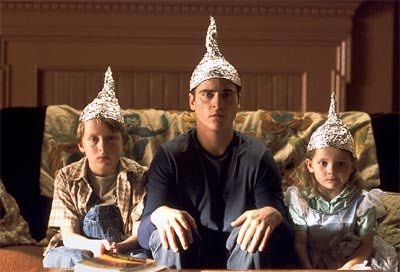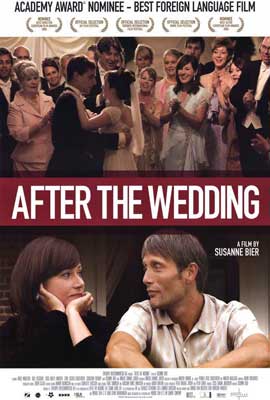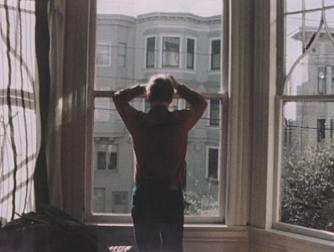Religion is the arena of popular, especially traditional, philosophy and ethics. Courtroom dramas push the envelope of ethics, displaying where law fails ethics, or the law can uphold ethics, depending on the story. Gett is the intersection of traditional and modern ethics in the midst of a curious courtroom drama.
The set up sounds like the Iranian drama from a couple years ago, A Separation, in which a woman desires a divorce from her husband, but obtaining that divorce isn’t at all clear cut. In Gett (which is the Hebrew term for “divorce”) it is clear that the husband is a righteous man, a scholar of Torah, who neither abuses nor cheats on his wife, and although it is clear that their marriage is far from a happy one, he refuses to give her a divorce. And he has the right to refuse her.
In a secular court, divorce, especially since the 1950’s, has been much easier to get. The trickiest part is if money or children are involved. In a religious court, such as Orthodox Jews or Catholics might have, a divorce is much more restrictive, and a level of unfaithfulness must be proven. Of course, one could always obtain a divorce through the secular court, but not if you want to remarry a Catholic or an Orthodox Jew. Then the right to remarry a religious must be obtained through religious permission. Vivian Amsalem is a religious woman, and wants to live her life at peace with a religious man. Thus, she must have a gett.
The ethical principle primarily being challenged in this film is patriarchy. Ancient Jewish culture is the oldest patriarchy based on a rule of law that considers all in the society, still in existence. Many Jewish cultures have set aside patriarchy, but many have not. Certainly, a strict reading of ancient Jewish law says that a divorce may only be obtained if the husband hands a written divorce to his wife. Thus, the husband has all the control of a divorce. A woman might sue for divorce, like Vivian, but she does not have the right to speak for herself, and if the husband refuses to give a divorce, then the judge’s hands are tied.
As a narrative, the great mystery is the marriage itself. All we see is the speech offered in court and in the anteroom. We have no idea how they lived or why Viviane is so desperate to get a divorce. And the courtroom proceedings, for the most part, carefully steps around the marriage, speaking of reputation and the public face of the marriage, only giving us small glimpses of the marriage itself. So we, along with the judges, are piecing together the truth and the motivations behind Viviane’s desperation and Elisha’s refusal.
While the hesitantly granted details are interesting, what is really on trial is the process itself. The greatest benefit of modern justice, in the instances when it is allowed, is the ability to speak one’s own perspective. An older male can never understand what it means to live as a woman. A wealthy person will never really appreciate the difficulties of being poor. The sane will never understand the way a mentally ill person undermines themselves without knowing. The white person won’t understand the limitations of being a black American. We can intellectualize the situations, even appreciate the difficulties, but the life of an oppressed person is much more difficult than any of us realize until we have experienced it ourselves. The life of a person of power is all the same, but each life of oppression is uniquely different. Thus, the oppressed must have the opportunity to speak, to explain, to give windows to the difficulties. And if there is a system in which the weak are not allowed to speak their peace, then no one can say it for them. No one will give them justice, because no one other than they even know what justice looks like for them.
Everyone must be given an opportunity to speak for themselves, to explain who they are and the difficulties they face. And people of power must be forced to listen to them or else justice will be thrown out the window.
The film is sparsely decorated, simply scripted, but the cinematography is interesting. Each scene is uniquely set up, with cameras seeking out different details. So we look at each time frame with different eyes, even though we are in the same rooms. It is clever and powerful and strongly reminiscent of 12 Angry Men in it's simplicity and power.
Spoiler discussion of the ending below the pic:
The set up sounds like the Iranian drama from a couple years ago, A Separation, in which a woman desires a divorce from her husband, but obtaining that divorce isn’t at all clear cut. In Gett (which is the Hebrew term for “divorce”) it is clear that the husband is a righteous man, a scholar of Torah, who neither abuses nor cheats on his wife, and although it is clear that their marriage is far from a happy one, he refuses to give her a divorce. And he has the right to refuse her.
In a secular court, divorce, especially since the 1950’s, has been much easier to get. The trickiest part is if money or children are involved. In a religious court, such as Orthodox Jews or Catholics might have, a divorce is much more restrictive, and a level of unfaithfulness must be proven. Of course, one could always obtain a divorce through the secular court, but not if you want to remarry a Catholic or an Orthodox Jew. Then the right to remarry a religious must be obtained through religious permission. Vivian Amsalem is a religious woman, and wants to live her life at peace with a religious man. Thus, she must have a gett.
The ethical principle primarily being challenged in this film is patriarchy. Ancient Jewish culture is the oldest patriarchy based on a rule of law that considers all in the society, still in existence. Many Jewish cultures have set aside patriarchy, but many have not. Certainly, a strict reading of ancient Jewish law says that a divorce may only be obtained if the husband hands a written divorce to his wife. Thus, the husband has all the control of a divorce. A woman might sue for divorce, like Vivian, but she does not have the right to speak for herself, and if the husband refuses to give a divorce, then the judge’s hands are tied.
As a narrative, the great mystery is the marriage itself. All we see is the speech offered in court and in the anteroom. We have no idea how they lived or why Viviane is so desperate to get a divorce. And the courtroom proceedings, for the most part, carefully steps around the marriage, speaking of reputation and the public face of the marriage, only giving us small glimpses of the marriage itself. So we, along with the judges, are piecing together the truth and the motivations behind Viviane’s desperation and Elisha’s refusal.
While the hesitantly granted details are interesting, what is really on trial is the process itself. The greatest benefit of modern justice, in the instances when it is allowed, is the ability to speak one’s own perspective. An older male can never understand what it means to live as a woman. A wealthy person will never really appreciate the difficulties of being poor. The sane will never understand the way a mentally ill person undermines themselves without knowing. The white person won’t understand the limitations of being a black American. We can intellectualize the situations, even appreciate the difficulties, but the life of an oppressed person is much more difficult than any of us realize until we have experienced it ourselves. The life of a person of power is all the same, but each life of oppression is uniquely different. Thus, the oppressed must have the opportunity to speak, to explain, to give windows to the difficulties. And if there is a system in which the weak are not allowed to speak their peace, then no one can say it for them. No one will give them justice, because no one other than they even know what justice looks like for them.
Everyone must be given an opportunity to speak for themselves, to explain who they are and the difficulties they face. And people of power must be forced to listen to them or else justice will be thrown out the window.
The film is sparsely decorated, simply scripted, but the cinematography is interesting. Each scene is uniquely set up, with cameras seeking out different details. So we look at each time frame with different eyes, even though we are in the same rooms. It is clever and powerful and strongly reminiscent of 12 Angry Men in it's simplicity and power.
Spoiler discussion of the ending below the pic:
The very last shot of the movie confused me. It is a shot of a pair of feet and lower calves walking over the tile of the courtroom. They couldn't be Viviane's, I thought, because the calves are too big. These are the legs of a larger woman than Viviane. I looked back over the film at the women who were a little overweight. But it didn't make sense for it to be them. They weren't important enough for the film, and what would it mean? It only makes sense if it is Viviane's feet but she...
Actually there has been a lot of attention given to her feet in the film. At first, you couldn't see them, but given the rest of her outfit, we assumed that they would be simple, conservative shoes. We notice her feet about halfway through her film, where she is wearing open toed high heels and her toes are painted. That's odd, and unlike her. Later, she is wearing a loose bright red blouse. Clearly, she wants to be seen as a loose woman. She wants the court to think she's a loose woman. And they do. They accuse her of having an affair with the lawyer. He is offended by that, perhaps too offended? But nothing is really made of it.
In thinking about this more, I realize that the feet in the last scene could be Viviane's if she were pregnant. She had warned Elijah that she could do something to make him sorry that he wouldn't give her a divorce. And when she agreed that she wouldn't be with another man after the divorce was given, she agreed, but had a funny smile on her face, as if she were disingenuous. OR if she had already been with another man. And she got pregnant by that man.
And then I remembered a story.
It's a Bible story, from the book of Genesis, so every Torah scholar in the courtroom should be familiar with it. It is the story of Tamar, who was married to a son of Judah, the ancestor of the Jewish kings. Judah's son died, so he married Tamar off to his second son. The second son also died. At this point, Judah was thinking that perhaps his sons died because of Tamar, although she had nothing to do with their deaths. He had the responsibility to give his third and youngest son in marriage to Tamar, so that she can bear the children of Judah's inheritance. But Judah held off, not wanting to put his youngest son in danger.
Tamar realized what Judah was doing and understood that she would never be married off to the youngest son. She then heard that Judah's wife died. When Judah was travelling a distance, she went ahead of time and set up a prostitute's tent on his path, dressed as a prostitute, and lured Judah into her tent.
Months later, it was discovered she was pregnant. Judah was relieved because it proved that she was an adulterous woman, and he didn't have to marry her to his son. As judge of his family, he declared her guilty and sentenced her to death. She asked to meet with him privately, and showed him a possession of his that she had taken when she was masqueraded as a prostitute. Then he understood that he was the father, and that she had tricked him. But, looking at the whole situation, he responded, "You are more righteous than I." Her son later became the patriarch of the tribe.
Viviane is also a woman trapped by a system of injustice, and she also used sex to escape this injustice. And, I believe, she had sex with the judge, the one determining her fate. Note that the judge left the proceedings and refused to deal with it anymore, right after fingers were being pointed as to who might be having a sexual relationship with Viviane. He was the one who was most upset when she let her hair loose and played with it. She was being blatantly sexual in the courtroom to catch a judge in temptation, so she could take advantage of the situation and be freed from her self-righteous, cold, miserable husband.
This is a lot of words, but I think this is the undercurrent of the second half of the film.
 |
| I win. |

















